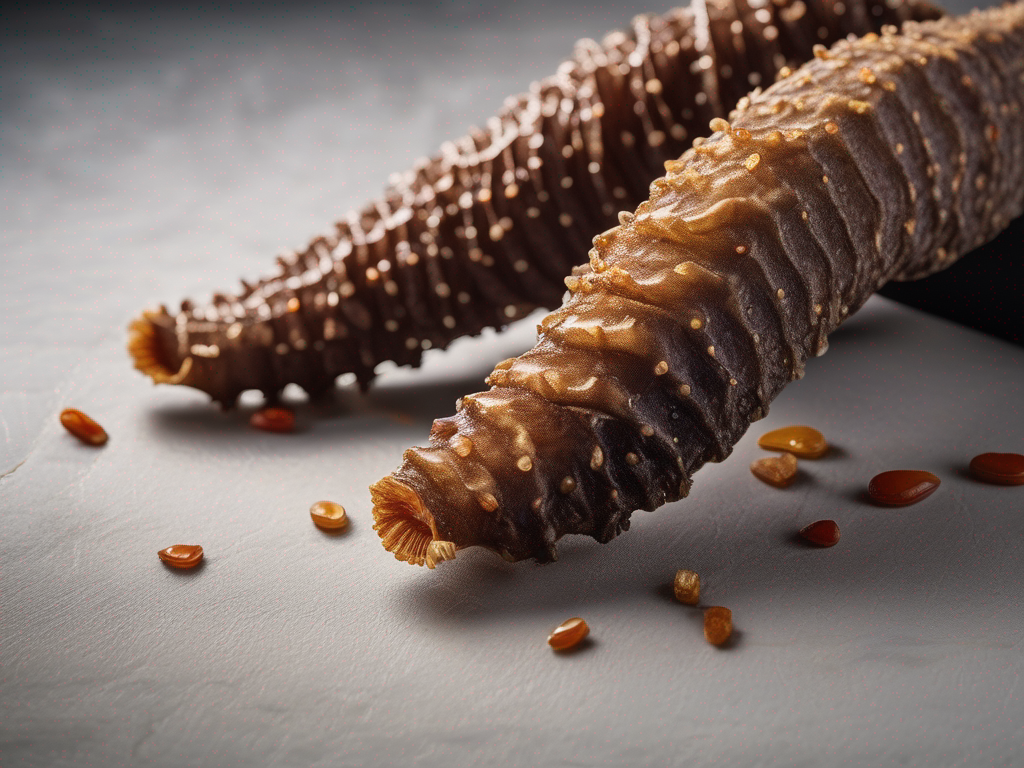
The Ultimate Guide to Storing Dried Sea Cucumber to Prevent Mold
Get Your Free Food Safety Cheat Sheet
30 most common foods with instant answers. Print it and stick it on your fridge—completely free!
The Ultimate Guide to Storing Dried Sea Cucumber to Prevent Mold
Dried sea cucumber is a prized delicacy in many Asian cuisines, known for its unique texture and umami flavor. However, improper storage can lead to mold growth, compromising the quality and safety of this exotic ingredient. In this comprehensive guide, we will explore the optimal storage conditions for dried sea cucumber to prevent mold and ensure its freshness. (Dried sea cucumber)
Understanding Dried Sea Cucumber
Dried sea cucumber, also known as "haishen" in Chinese cuisine, is a marine animal that has been processed through drying. It is commonly used in soups, stews, and braised dishes for its gelatinous texture and nutritional benefits. Dried sea cucumber is rich in protein, vitamins, and minerals, making it a popular choice in traditional Chinese medicine and culinary practices.
Why Mold Growth is a Concern
Mold thrives in warm, humid environments and can develop on dried sea cucumber if not stored properly. Mold not only affects the taste and texture of the sea cucumber but also poses health risks if consumed. To ensure the quality and safety of your dried sea cucumber, it is crucial to store it in optimal conditions.
Optimal Storage Conditions
Proper storage is key to preserving the quality of dried sea cucumber and preventing mold growth. Follow these guidelines to ensure your dried sea cucumber stays fresh and safe for consumption:
1. Store in a Cool, Dry Place
- Keep dried sea cucumber in a cool, dry place away from direct sunlight and heat sources.
- Ideally, store it in an airtight container or vacuum-sealed bag to protect it from moisture.
2. Maintain Low Humidity Levels
- Moisture is the enemy when it comes to preventing mold growth. Aim to store dried sea cucumber in an environment with low humidity levels.
- Consider using silica gel packets or rice grains in the storage container to absorb any excess moisture.
3. Check for Signs of Mold Regularly
- Inspect your dried sea cucumber periodically for any signs of mold growth. Discard any pieces that show mold or unusual discoloration.
- If storing in bulk, ensure proper air circulation to prevent mold from spreading to other pieces.
4. Use Proper Packaging
- If purchasing dried sea cucumber in bulk, consider dividing it into smaller portions for easier storage.
- Wrap individual pieces in parchment paper or wax paper before placing them in a sealed container or resealable bag.
5. Rotate Stock Regularly
- To ensure freshness, rotate your stock of dried sea cucumber regularly. Use older pieces first before moving on to newer ones.
- Label each package with the purchase or storage date to keep track of freshness.
Safety Tips
In addition to proper storage practices, here are some safety tips to keep in mind when handling dried sea cucumber:
- Wash your hands thoroughly before and after handling dried sea cucumber to prevent contamination.
- Avoid cross-contamination by using separate cutting boards and utensils for raw and cooked sea cucumber.
- Cook dried sea cucumber thoroughly before consumption to kill any potential bacteria or pathogens.
Conclusion
By following the optimal storage conditions outlined in this guide and implementing safety tips, you can enjoy dried sea cucumber in your favorite dishes while ensuring its quality and safety. Remember that proper storage is essential in preserving the unique flavor and texture of this prized ingredient. With these tips in mind, you can savor the rich flavors of dried sea cucumber without the worry of mold contamination. [Learn more about dried sea cucumber](/food/dried sea cucumber) and elevate your culinary creations today! (Dried sea cucumber)
Related Posts
Here are some other articles you might find helpful:
Authoritative Food Safety References
These agencies and university labs inform every tip and health precaution we publish.
USDA FoodKeeper – Cold Storage Guidelines
Official refrigerator, freezer, and pantry timelines maintained by the U.S. Department of Agriculture.
Visit USDA FoodKeeperFDA Produce Safety Rule & Grower Guidance
Field-to-fridge handling practices that prevent contamination of fruits, vegetables, and leafy greens.
Visit FDA Produce SafetyCDC Foodborne Illness Prevention Hub
Surveillance-backed guidance on pathogens, symptoms, and steps to reduce foodborne illness risk.
Visit CDC Food SafetyUC Davis Postharvest Technology Center
University research detailing optimal storage atmospheres for produce after harvest.
Visit UC Davis PostharvestPenn State Extension – Home Food Preservation & Safety
Peer-reviewed extension bulletins on safe canning, chilling, and reheating practices.
Visit Penn State ExtensionGet Your Free Food Safety Cheat Sheet
30 most common foods with instant answers. Print it and stick it on your fridge—completely free! Want more? Upgrade to the complete guide with 70+ foods.
Scan your food directly and get instant safety info using our AI-powered camera feature.